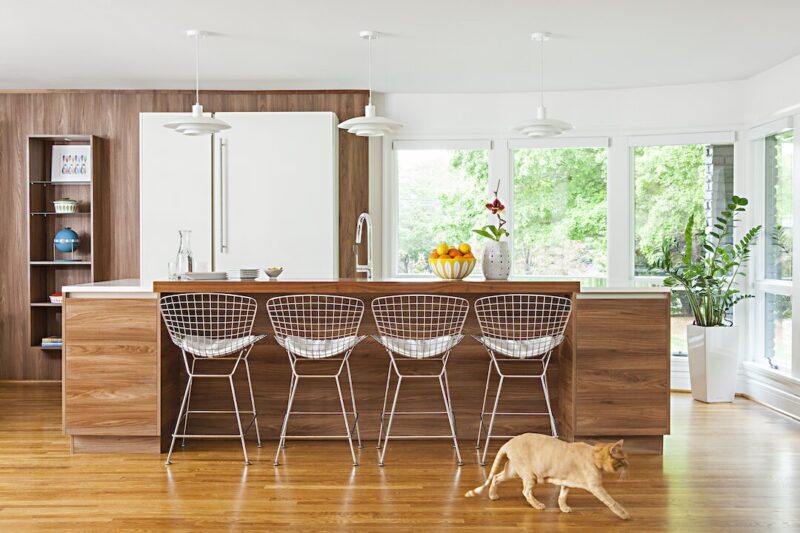Are you struggling to balance preservation and renovation as you work on your home? Atomic Ranch’s latest book, Remodeled Marvels, can help! Here’s how this homeowner renovated her kitchen, while maintaining its core Mid Century Modern elements.
A version of this story appears in our newest book, Atomic Ranch: Remodeled Marvels by Jickie Torres.
Balancing Old and New
The kitchen is one of the most hotly contested spaces in the debate over what to keep as original and what to alter. While the answer, of course, comes down to whatever works best for your family, I like to think of a sliding scale based on which original features are in question, how much each fits your day-to-day needs and lifestyle, and what your end goal is as an owner of your Mid Century Modern home.

How much of the original is left intact? If it’s 100 percent original and can be allowed to woo you to keep it so, consider this: How much of what you think you need from a space is born from pure habit? Our knee-jerk reactions to original vintage kitchens are that they are small, creaky and inefficient. But much as with the zero-waste movement or the minimalist movement, you might be surprised at how little you need to have at hand to get the job done in the kitchen. Can you pare down your supplies and tools? Can you adapt to some new cooking habits and methods to work better in the space?
What kinds of original features are we talking about? Basic cabinetry? A simple sink and coordinating fixtures? Rare lighting? Working vintage appliances Read that list aloud, and you’’’ probably pick up on the message I’m trying to convey, which is that some mid-century features are certainly worth keeping, while others were never really considered that remarkable to begin with (pedigree of the home notwithstanding.)
Upgrading countertops while keeping original cabinets or swapping out plumbing fittings and hardware for a dialed-up MCM look? Both are great examples of ways to keep the original spirit of the space intact while updating for today.

Debra Szidon, founder of The Cass Clutch and Cocoon Home Design, waited for a year before tackling a kitchen remodel in her 1953 Lafayette, California, home – the work of Fred Langhorst, an apprentice of Frank Lloyd Wright. Despite wanting to make changes to the kitchen, Debra felt some elements were not up for debate – namely the original concrete radiant flooring, which was painstakingly restored.
However, Debra did remove a dividing wall to connect the kitchen with the dining room. “I strongly believe in preserving original features as much as possible – as long as they work for the way we live,” she says. “In the case of our kitchen, it was cramped and not easy to use. By removing a wall, we made it functional for modern-day family living.” According to Debra, if you truly love mid-century design and the time period, balancing authenticity with personalization comes naturally.

For more preservation tips, order your copy of Remodeled Marvels either through our store or on Amazon. You’ll also find expert advice, stories, tips on budgeting, house hunting, and a room-by-room guide to remodeling your mid century marvel.
And while you’re at it, make sure you also pick up our special Exteriors issue where you can see more dreamy modern gardens, pools, outdoor living rooms and more!












